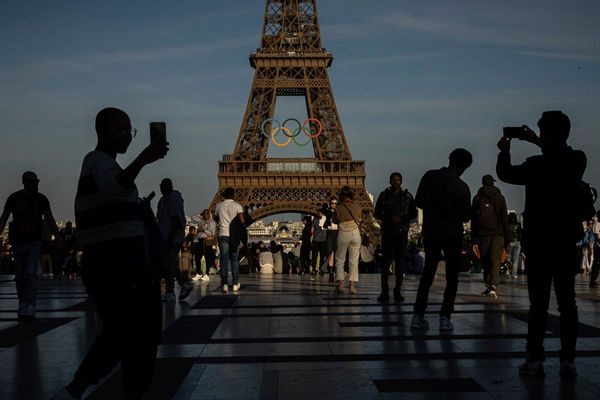
The 2024 F1 season is one of change for Haas amid the departure of team boss Guenther Steiner and its technical director Simone Resta.
Dissatisfied with the lack of progress, owner Gene Haas has swung the axe and entrusted new principal Komatsu to undertake a full-scale revision of its technical programme and employ a more engineering-led approach.
As Haas revealed renders of Kevin Magnussen's and Nico Hulkenberg's 2024 machine, the VF-24, Komatsu has explained his vision of where it has gone wrong for Haas, and why it will have to brace for short-term pain to take the next step.
PLUS: The hints that Haas' livery launch reveals about its 2024 car
Failing to convert one-lap pace into sustained race performance, partly due to tyre overheating issues, Haas decided to change the concept for last year's US Grand Prix in September in an effort to find a cure.
That redeveloped car didn't yield major results and, not only did it fail to arrest its slide to last in the constructors' championship, but it also forced the squad to halt its 2024 car programme during a critical period.
It was a big price to pay, with Komatsu expecting Haas to be "towards the back of the grid if not last" in Bahrain. But he says that the experiment was necessary to avoid even bigger issues for 2024.
"We're realistic about our expectations for the VF-24 to start," said Komatsu.

"Out of the gates in Bahrain, I still think we're going to be towards the back of the grid, if not last. The reason our launch-spec car is not going to be quick enough in Bahrain is not because of the quality of the people we have here, but it's because we started late and then we stopped for two months to do the Austin upgrade.
"It was a big exercise to do, and it did delay our VF-24 development, but if we hadn't done it and then had a huge surprise come pre-season testing, it would've hurt us immensely.
"It was a difficult balance, and doing the Austin package means the VF-24 launch car may not be as advanced as it could be but, at the same time, we have better confidence in what we're putting out on track now.
"We're all realistic that our launch car in Bahrain will not necessarily turn heads, but our concentration and focus is to work with the VF-24, understand the car, and then define the correct pathway to upgrade the car."
In recent years Haas has had a tendency to start off strong but then fall behind in F1's development war, which is something Komatsu is hoping to reverse with streamlined technical processes and a personnel reshuffle.
Andrea de Zordo has been promoted from chief designer to technical director to replace Resta, with Komatsu expecting to promote a new chief designer from within.
He has also installed former head of vehicle performance group Damien Brayshaw into the newly created position of performance director to have a wider remit and improve communications across the vehicle performance, trackside engineering and aero teams.
"I think many people were feeling the same thing – not knowing where this team was going, how it's going to improve," Komatsu explained.
"We need a clear target, vision and communication, and to remove certain barriers that didn't need to be there. Everyone needs to understand what they're dealing with, how this team is moving forward, and our approach towards how we're going racing.
"Drivers will play a stronger role too. Last year, their understanding of what the weakness of the car was clear, however we weren't then able to reflect that in our car development programme. With the changes we made in the team, we aim to address this issue with our drivers more in the loop of development paths so that nothing gets lost."

Komatsu believes that, while Haas will forcibly start 2024 on the back foot, the changes he has made will translate into a more robust upgrade path, much like Andrea Stella's McLaren tech team reshuffle at the start of 2023 led to an impressive development curve around the summer.
"If you look at the organisational structure previously, there wasn't a clear path to close the loop on that side," the Japanese added. "Everything that's found trackside, there's now a closed loop going into the aero, wind tunnel and CFD departments. Now, at least even if there's a disagreement, everyone is clear about why we're developing the car in a certain way.
"That's one key reason as to why we haven't been able to put upgrades on the car and fall back in the season. We're now already working in that way and there's much better transparency, openness, and communication. Therefore, I believe we have a much better chance of upgrading the car properly this year.
"The focus is to have a good test programme for Bahrain so that we have quality data to analyse and understand [in] which direction to develop the car.
"This means understanding the strength and weakness of the VF-24 accurately, then put a coherent plan together to produce updates on the car, which hasn't happened previously."







